Iran has a beautiful and diverse landscape,” says photographer Samuel Zuder. “But in order to experience the depth of the country, you need to meet the Iranian people.”
On a four-week trip, Zuder found that Iranians were happy to welcome him into a world that exists outside the strict rules that govern public life. “Iranians, especially the younger generation, are very well educated and excited about discussing politics and culture with foreigners—especially Westerners,” Zuder says. “Every day, someone new invited me into their home to share a meal, or offered to show me around.”
“We in the West only see the headlines, but beneath the surface is a world waiting to be explored.”
One day, while he was shooting in Tehran, a young man and two young women—all students—approached Zuder and invited him for a drive around the city. Twice, they were stopped by the secret police. The first time, Zuder was accused of giving the women cigarettes, and was asked to leave the car and to stop taking pictures. The second time, after being stopped in a public park, “The students argued with the police officer,” Zuder says. “In fact, everyone defended me. An elderly woman sitting on the grass with her granddaughter even asked me to take her photo as a gesture of support.”

Iran - Teheran - Borj-e Milad - Turm der Geburt - Fernsehturm - 435 Meter - höchster Turm in Iran - sechsthöchster Fernsehturm der Welt - Architekt: Mohammad Reza Hafezi - Handelszentrum: The Tehran International Trade and Convention Center - 05 2014 engl. Iran - Tehran - Milad Tower - Tower of birth - TV Tower - 435 meters - tallest tower in Iran - sixth highest TV tower in the world - Architect: Mohammad Reza Hafezi -The Tehran International Trade and Convention Center - 05 2014
Photo by Samuel Zuder
“There’s so much positive energy in the people of Iran,” Zuder says. “We in the West only see the headlines, but beneath the surface is a world waiting to be explored.” Iran - Teheran - Shopping - Mann im Anzug telefoniert - 05 2014 engl: Iran - Tehran - Man in suit on the phone - Shopping- 05 2014 Photo by Samuel Zuder

Iran - Teheran - Großer Basar - Grand Bazaar - Stadtteil Basar - weltgrößter Basar- Banken, Moscheen, Gästehäuser - 10 km Korridore für unterschiedliche Waren - 05 2014 engl: Iran - Tehran - Grand Bazaar - Grand Bazaar - Bazaar district - the world’s largest bazaar - mosques - Bed and Breakfast - banks - 10 km corridors for different goods - 05 2014
Photo by Samuel Zuder
It was late in the afternoon when Zuder headed to the Grand Bazaar in Tehran, and many of the vendors were beginning to close up shop. Even so, he spent about half an hour exploring one particular part of it. “I love this location,” he says, “because it looks like an apartment complex. Families walk through, the dealers relax on their carpets—everywhere someone is sitting, having a cup of tea, or eating a snack.”

Iran - Teheran - Restaurant Divan - Sam Shopping Center - Terrasse - Nordteheran - teuerster Stadtteil von Teheran - 05 2014 engl: Iran - Tehran - Restaurant Divan - Sam Shopping Center - Terrace - north Tehran - the most expensive district of Tehran - Starter - fresh herb salad with cheese truffles and medjool dates Main Course: grouper (hamour) with baked jogurt sauce with leek rice Drink: rose water with safran 05 2014
Photo by Samuel Zuder
Zuder had heard rumors about the food, atmosphere, and design at Divan, a restaurant in northern Tehran that specializes in contemporary interpretations of traditional Persian dishes. After a fresh herb salad with medjool dates and cheese truffles, grouper fish paired with yogurt sauce, rice with leeks, and a glass of saffron-infused rose water, Zuder snapped this photo of an empty corner in the bustling establishment.
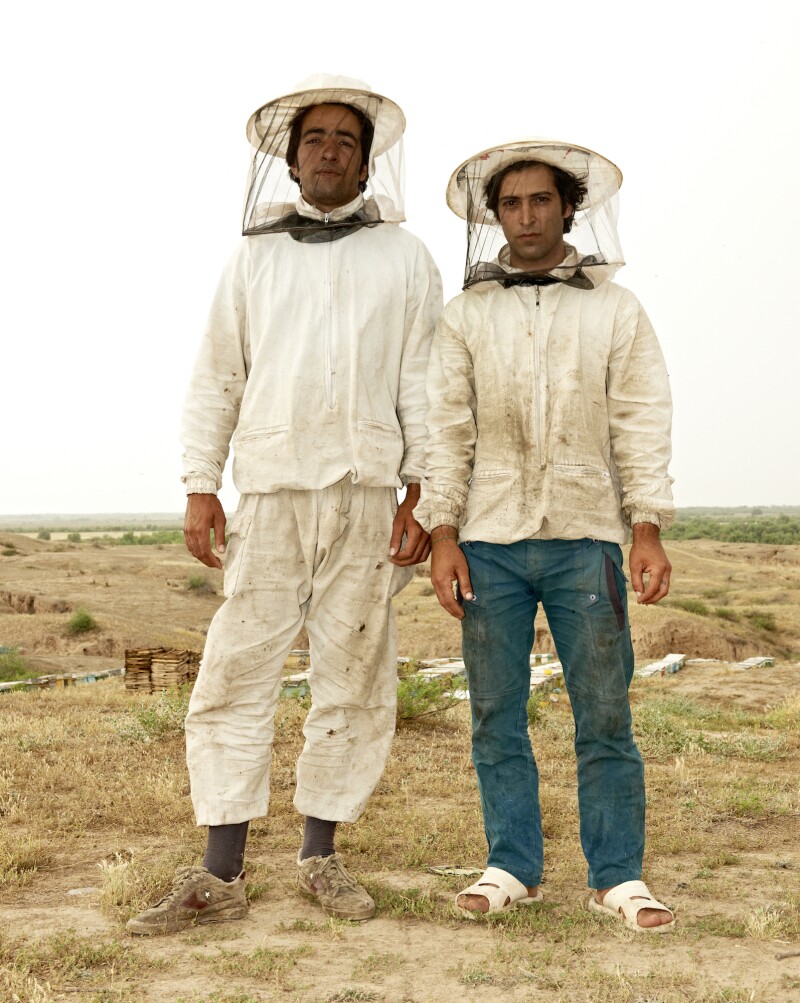
Iran - Shushtar - Provinz Khuzestan - antike Befestigungsstadt - historisches Bewässerungssystem - UNESCO-Weltkulturerbe - 05 2014 engl: Iran - Shushtar - Khuzestan province - antique city - historical irrigation system - UNESCO World Heritage site - 05 2014
Photo by Samuel Zuder
Before landing in Iran, Zuder was unaware of the country’s booming honey industry. “We were heading back to our hotel when I saw rows upon rows of colorful bee boxes,” he says, “so we drove to the farm. There, we met these two beekeepers. I asked them to pose for a few photographs—the entire scene was very peaceful.”

Iran - Teheran - Borj-e Milad - Turm der Geburt - Fernsehturm - 435 Meter - höchster Turm in Iran - sechsthöchster Fernsehturm der Welt - Architekt: Mohammad Reza Hafezi - Handelszentrum: The Tehran International Trade and Convention Center - Blick auf den Norden Teherans - 05 2014 engl: Iran - Tehran - Milad Tower - Tower of birth - TV Tower - 435 meters - the highest tower in Iran - sixth highest TV tower in the world - Architect: Mohammad Reza Hafezi - Mart: The Tehran International Trade and Convention Center - View of the northern Tehran - 05 2014
Photo by Samuel Zuder
Many Iranians are very proud of Tehran’s Milad Tower; not only is it the tallest tower in the country (and the sixth tallest in the world), but the structure’s 12 floors also include an observation deck, a rotating restaurant, and a number of public art galleries. Plus, the view is tough to beat. “This picture is from the seventh or eighth story,” Zuder says. “From this height, the city looks like it’s made out of Legos.”
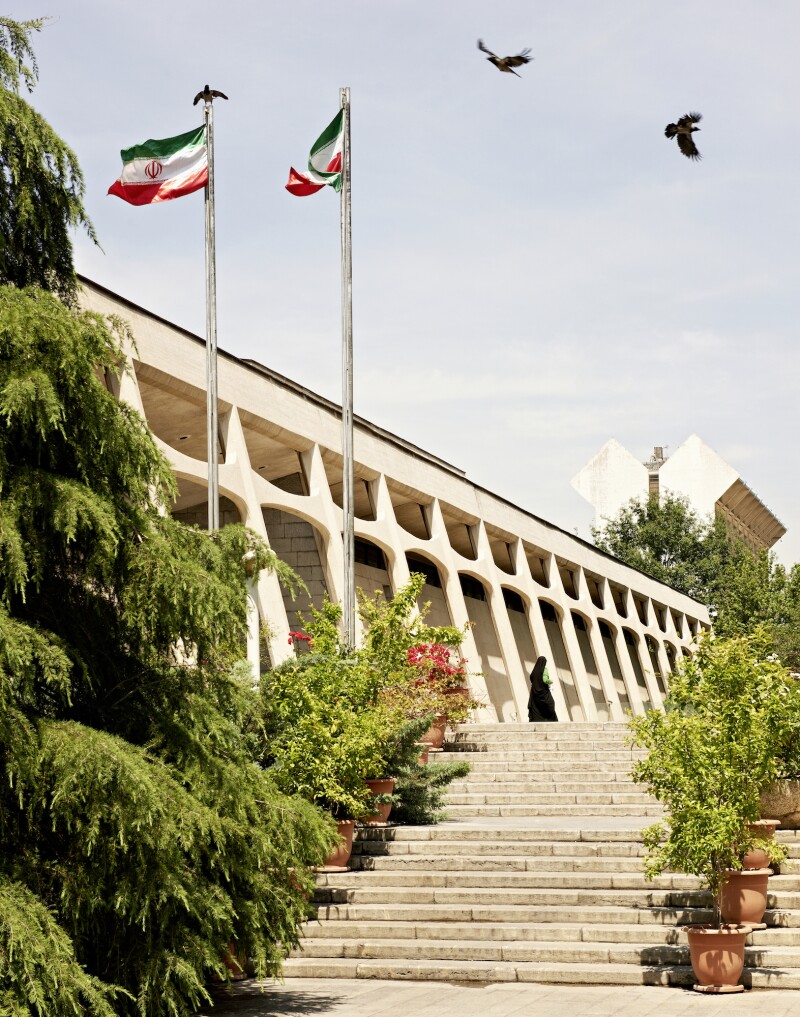
Iran - Teheran - Laleh-Park - Iranisches Teppich Museum - Perserteppiche vom 17. Jahrhundert bis heute - 05 2014 engl: Iran - Tehran - Laleh Park - Carpet Museum of Iran - Persian carpets from the 17th century to the present day - 05 2014
Photo by Samuel Zuder
It was a hot day when Zuder arrived at The Carpet Museum in Tehran, and after seeing many, many carpets at the Grand Bazaar, he opted to skip the museum tour. “For me, the outside of the building was more visually interesting,” Zuder says about the architecture, which was designed by Iran’s last queen, Farah Diva Pahlavi. “I spent a few hours walking around the area, including Laleh Park, and waiting for the perfect moment to take a photo. I find that if you wait long enough, most times something will happen—like this woman walking along the side of the building and the birds taking flight.”
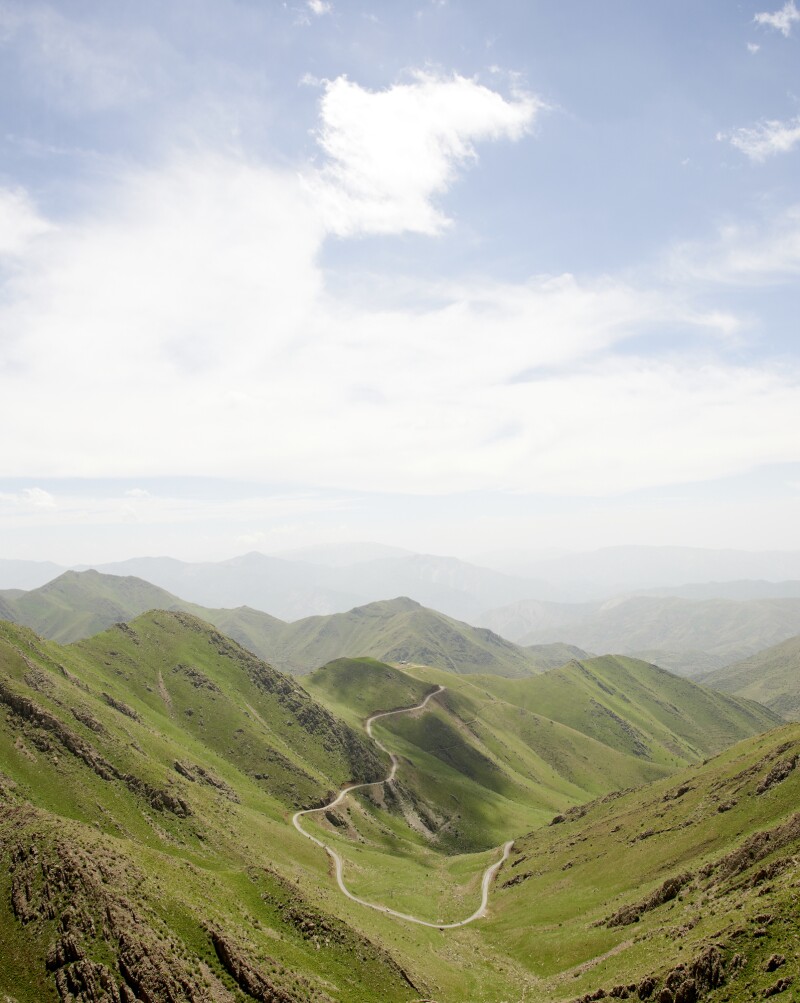
Iran - Zagros Mountains - Zagros-Gebirge -Kurdistan - 05 2014 engl.: Iran - Zagros Mountains - Zagros Mountains -Kurdistan - 05 2014
Photo by Samuel Zuder
Zuder spent days driving through the Zagros Mountains, a mountain range that stretches throughout Iran, Iraq, and Eastern Turkey. Not only are the mountains beautiful, but they also double as a constant reminder of the land’s ancient history. Some of the rocks date back to Precambrian times (that’s over 500 million years ago), and the range itself has been a natural border for centuries—take the boundaries of the Persian and Ottoman empires, for example.
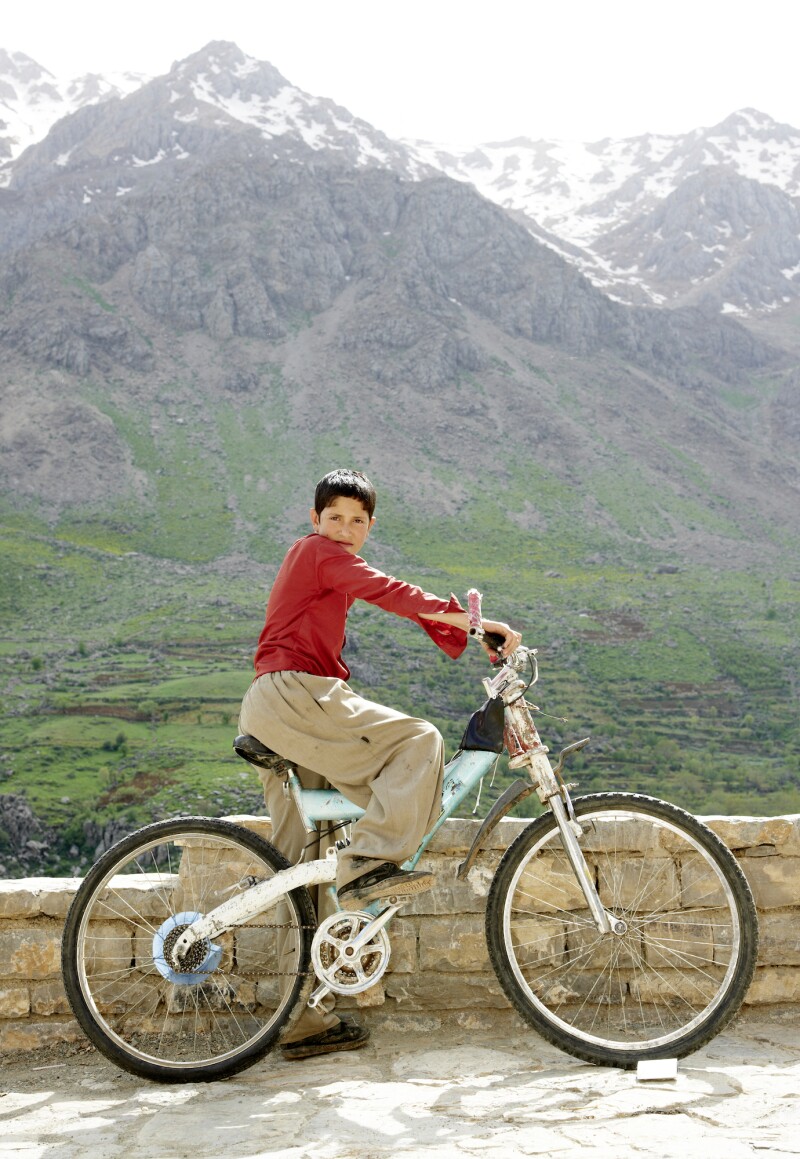
Iran - Oraman - Zagros Mountains - Zagros-Gebirge - Kurdistan - Junge mit Fahrrad - 05 2014 engl.: Iran - Zagros Mountains - Zagros Mountains -Kurdistan kids on a mountain bike - 05 2014
Photo by Samuel Zuder
Zuder also passed through a number of small villages on the trip, including this one in Kurdistan. “I took this photo from the car,” he says. “This young man was curious as to what we were doing, and he came over and parked his bike right next to us. I didn’t get his name or his age, but in my imagination he has the nicest bicycle in town and all the other kids are just a little jealous of him.”

Iran - Zagros Mountains - Zagros-Gebirge -Kurdistan - Familie spiel im Schnee - 05 2014 engl.: Iran - Zagros Mountains - Zagros Mountains -Kurdistan - family playing in the snow - 05 2014
Photo by Samuel Zuder
“When we reached this particular mountain peak, we found a field of snow and pulled over next to this family,” Zuder says about his travels through the Zagros Mountains. “It was the middle of summer, and these people were crazy about the snow—the whole family got out and played, and when we left even the grandparents were standing outside of the car holding hands and dancing.”
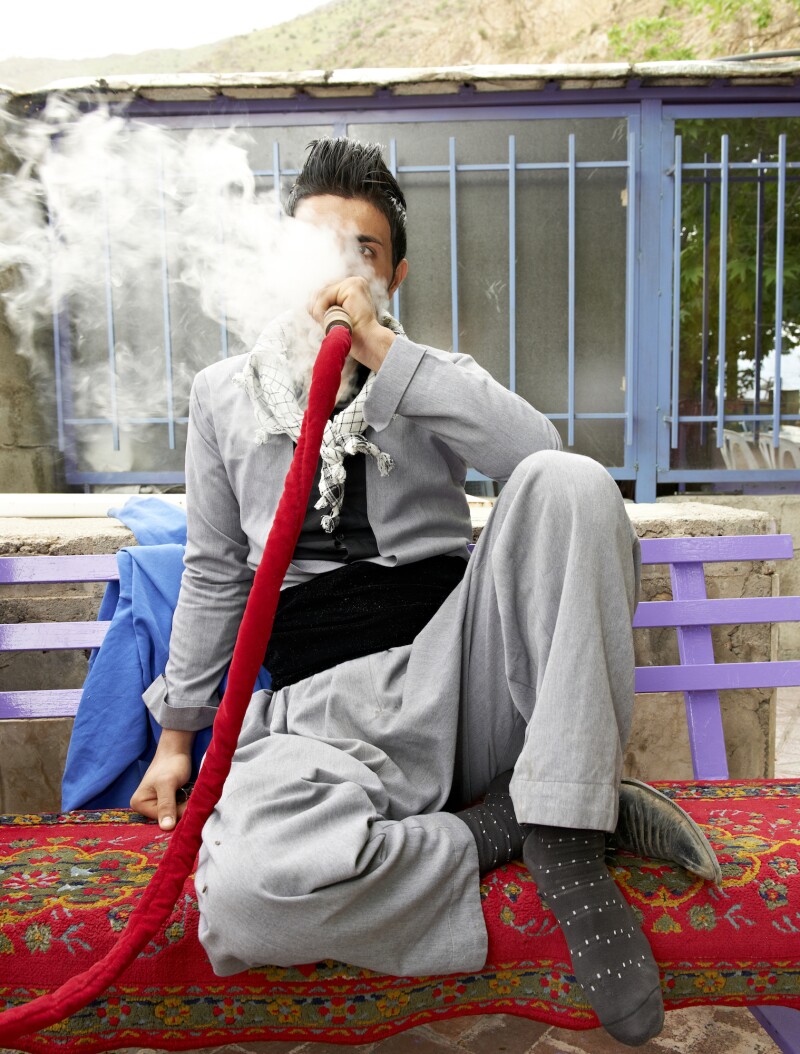
Iran - Nowsud - Provinz Kermanschah - junger Mann raucht Wasserpfeife - Kurdistan - Schmuggler-Dorf an der Grenze zum Irak - 05 2014 engl: Iran - Nowsud - Kermanshah Province - Kurdistan - smugglers village on the border with Iraq - 05 2014
Photo by Samuel Zuder
“On our arrival in Nowsud, a village at the border of Iran and Iraq, we saw many men on horseback rushing through the streets,” Zuder says. “We learned that this was a smugglers’ village, and that many people cross the border here to buy and sell goods.” At the local teahouse, Zuder and his friends sat with a group of young men smoking shisha. “Sometimes this man was totally covered by smoke,” he says. “It made the scene a bit mysterious in that you can only imagine what he really looks like.”
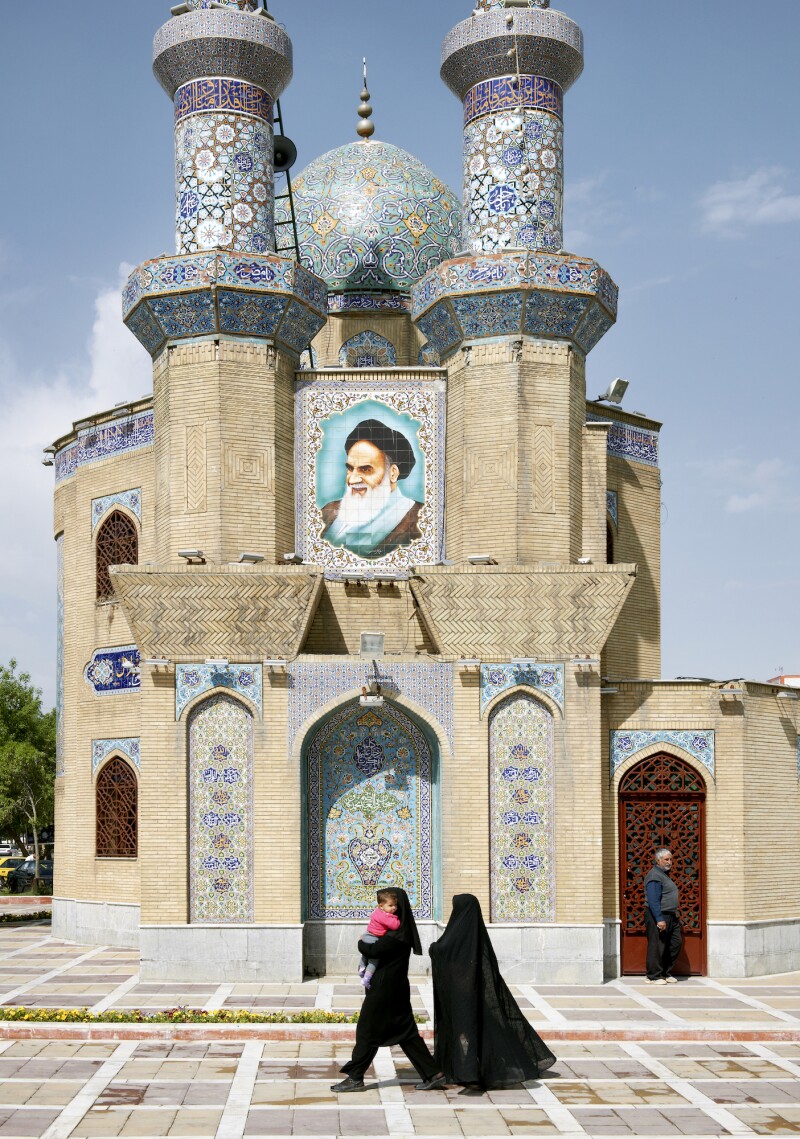
Iran - Kermanschah - Moschee mit Khomeini Mosaik -Hauptstadt der iranischen Provinz Kermanschah - Grenze zum Irak - 05 2014 engl: Iran - Kermanshah - Mosque with Khomeini mosaic -Hauptstadt the Iranian province of Kermanshah - border with Iraq - 05 2014
Photo by Samuel Zuder
Zuder and his hosts were on their way through Kermanshah, a province in western Iran, when he insisted they pull over to take a closer look at this mosque. “Bazaars, schools, shops—Ayatollah Khomeini’s face is everywhere,” Zuder says about the founder of the Islamic Republic of Iran. “I don’t know how many thousands of times I saw his portrait on my trip, but this was the first time I’d seen it on the side of a mosque.”
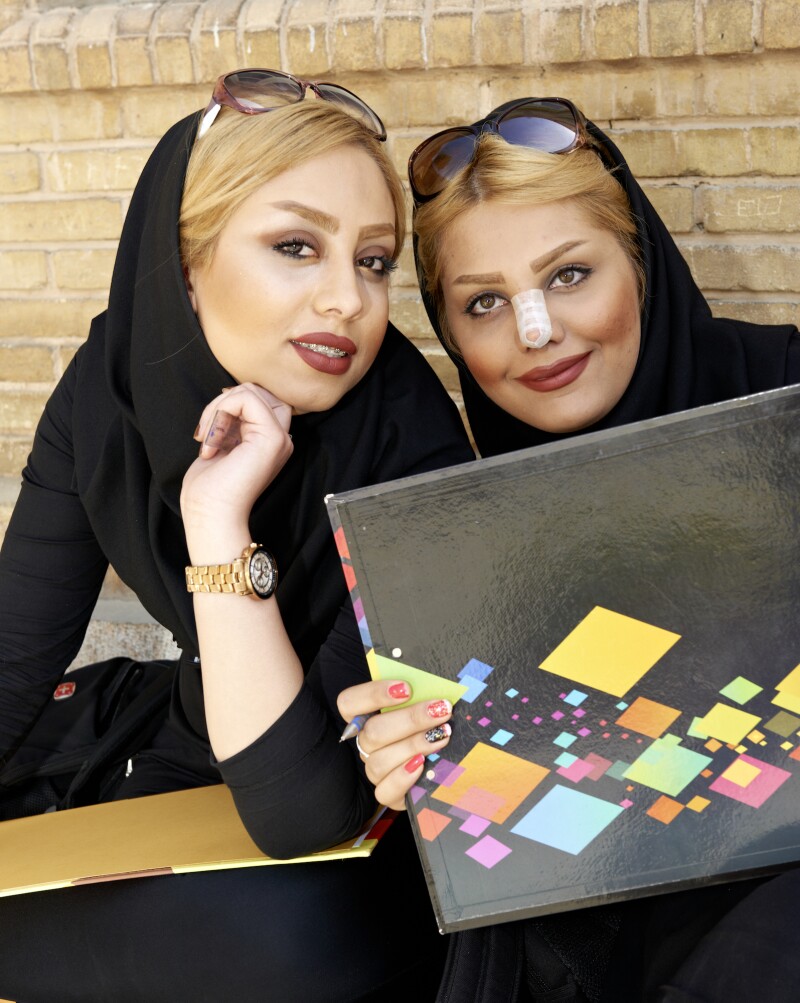
iran - ishfahan - Vank-Kathedrale - armenisch-apostolische Kirche im Stadtteil Dschulfa - architektur-studentinnen - 05 2014 engl.: iran - Ishfahan - Vank Cathedral - Armenian Apostolic Church in the Julfa district - Architecture students - 05 2014
Photo by Samuel Zuder
At an Armenian church in Isfahan, Zuder met a group of students who were sketching the architecture of the building. “At first I thought these two women were twins,” he says, “but of course they were just friends. Because so many people (men included) get nose jobs in Iran, a glimpse of post-surgery tape is nothing special.”

Iran - Nekropolis - Naqsch-e Rostam - Provinz Fars - Kamel für Touristen - 05 2014 engl: Iran - Necropolis - Naqsh-e Rostam - camel for tourists - - Fars Province 05 2014
Photo by Samuel Zuder
Just outside of Persepolis is Naqsh-e Rostam, a necropolis built into the side of a cliff where ancient rock reliefs depict images of former emperors, momentous battles, and gods and goddesses. Carved into the wall there are entrances into the tombs of four rulers from the First Persian Empire (aka the Achaemenid Empire), each marked by a large cross. It’s a popular destination for history fanatics—as is its neighboring site, Naqsh-e Rajab. “This camel was purely for tourists,” Zuder says. “I thought the image of it standing there with this strange metal flight of stairs was really bizarre—as if it were at an airport or something.”
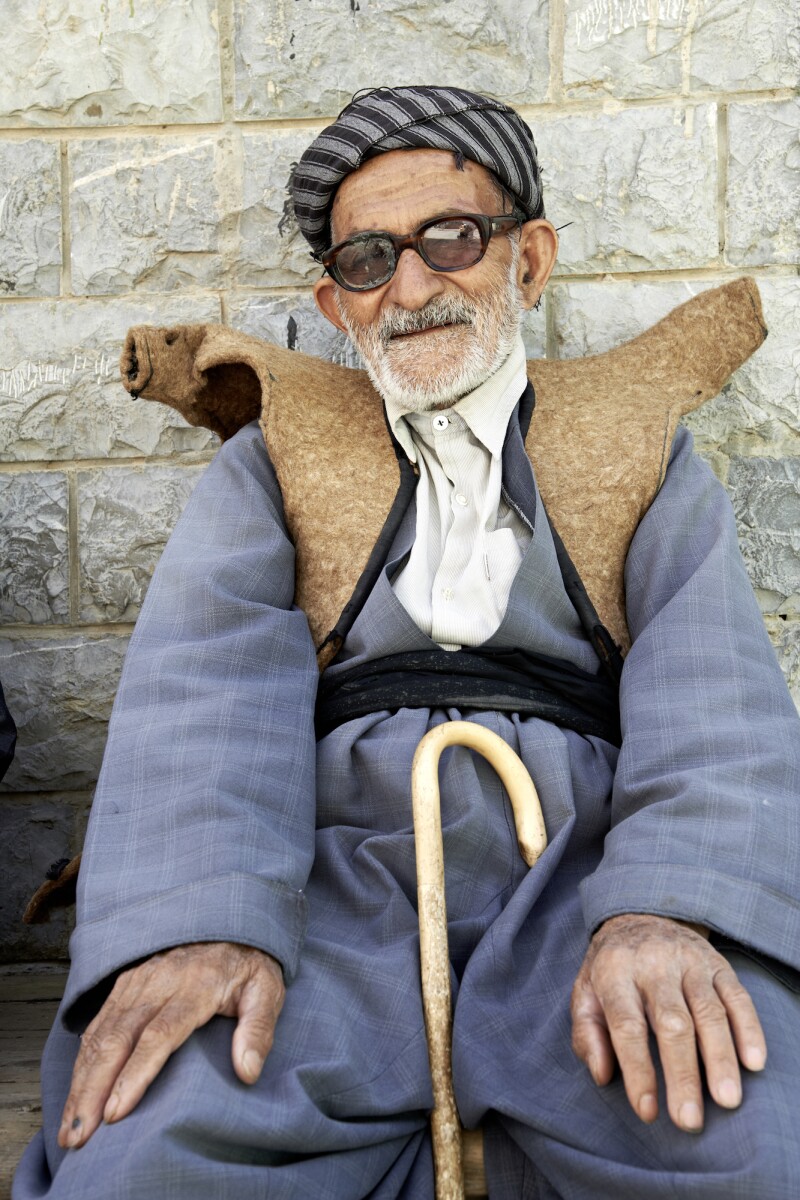
Iran - Oraman - Zagros Mountains - Zagros-Gebirge -Kurdistan - 05 2014 engl.: Iran - Zagros Mountains - Zagros Mountains -Kurdistan - 05 2014
Photo by Samuel Zuder
>>Next: This Is What Everyday Life in the Middle East Actually Looks Like











